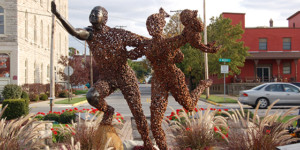 THE UNDERGROUND RAILROAD – SANDUSKY WALKING TOUR
THE UNDERGROUND RAILROAD – SANDUSKY WALKING TOUR
While gazing across Sandusky Bay at a world class amusement park or watching pleasure craft glide serenely across the water while standing in Sandusky’s Facer Park, we easily forget the active role the city’s waterfront played in the operation of the Underground Railroad well over a century and a half earlier.
With the ratification of the United States Constitution in 1787, which condoned slavery, the institution and its accompanying controversy escalated until civil war erupted in 1861. The rapid expansion of cotton in the Gulf States coupled with the successful production of crops like sugar required a never ending supply of labor to thrive. As cotton fields stretched westward so did the insatiable demand for slave labor. Escalating cotton prices in turn drove up the cost of labor, with the price of prime field hands easily exceeding $1000 by the Civil War.
Eastern slaveholders in states such as Virginia and Kentucky callously sold their slaves to traders supplying the western markets. While the harsh treatment of enslaved peoples and the despicable practices they endured are well documented, the heart-wrenching practice of tearing families apart is often overlooked and served as primary force chasing people to freedom.
Harriet Beecher Stowe wove the city into her widely popular Uncle Tom’s Cabin storyline, released in 1852. READ MORE
In 1925, H. L. Peeke, then President of the Firelands Historical Society, wrote this article for The Centennial History of Erie county, Ohio: The History of Underground Railroad in Erie County, which presents a comprehensive history of those people and places that were so important to Sandusky’s Underground Railroad history.
DOWNLOAD the brochure to make your exploration a little easier!
WALKING TOUR DIRECTIONS
Because the sites on the Underground Railroad Walk are spread over a fairly wide area, some visitors may choose to drive to the sites that interest them.

STOP 1 – GETTING THERE AND GETTING STARTED
Park in the Erie County Parking Garage – NW Corner of Columbus and W. Washington Row. Head south on Columbus Ave. to West Washington Row. Head west on Washington Row to:
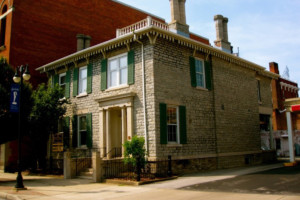
LUCAS & HARRIET BEECHER
215 W Washington Row
Beecher represented Benjamin Johnson, a fugitive slave who arrived in Sandusky during the 1830’s. Beecher won Johnson’s freedom by arguing that Johnson was not the property of the plaintiff because the purchase was made in Ohio, which was a free state. Johnson then became a free resident of Sandusky. Harriet Beecher Stow wove the city into her widely popular Uncle Tom’s Cabin storyline, released in 1852. Learn More
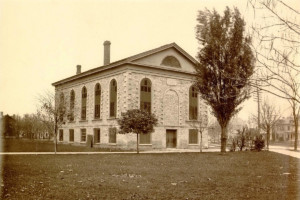
BEATTY CHURCH
SE corner of Washington & Jackson Sts
On June 23, 1835 S G Wilson was to deliver three lectures on the subject of slavery at the Methodist Meeting House. Amid petitions and threats, Sandusky’s mayor, John Beatty, was determined that the lectures should be given. Wilson was allowed to give two lectures; then he was barred from the Meeting House. Mayor Beatty promptly withdrew his membership in the church and formed a new Methodist Church known as the Beatty Church which stood on this site. Learn More
STOP 2
Continue west on W Washington Row and cross Jackson St. Turn left and then take an immediate right heading west on West Washington St to Decatur. Turn left to:
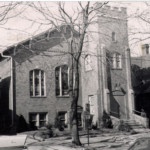 SECOND BAPTIST CHURCH
SECOND BAPTIST CHURCH
315 Decatur St
One of the most active stations in the Sandusky Underground Railroad network was the Second Baptist Church. It was founded as Zion Baptist Church in 1849 by a group of former slaves and freeborn Blacks. Just prior to the Civil War, the church was organized at its present site under the name First Regular Anti-Slavery Baptist Church. Learn More
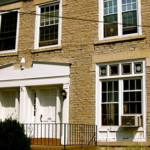 JOHN & SAMUEL IRVINE HOUSE
JOHN & SAMUEL IRVINE HOUSE
320-322 Lawrence
The Irvine brothers lived in this double house, and regularly provided aid to escapes slaves. At one point they took possession of a coffin, which later contained a runaway slave. Learn More
STOP 3
Continue south on Decatur to Adams St. Walk east on Adams Street to: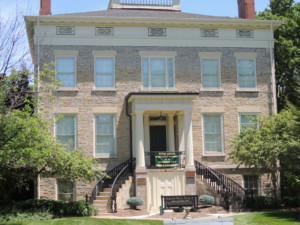
FOLLETT HOUSE
404 Wayne St
Oran Follett, who was the publisher of the Lincoln-Douglas Debates, resided here. Eliza, Oran’s second wife, was very sympathetic to escaping slaves. According to Eliza’s granddaughter, “No one knows how many slaves she concealed in the basement…or out in the woodshed. She warmed, fed and clothed them, then aided them in their escape across Lake Erie to Canada.” Learn More
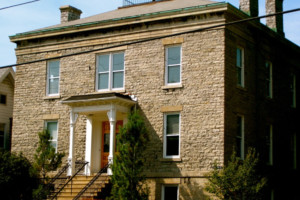
JOSEPH M ROOT HOUSE
231 E Adams St
Joseph Root was a radical abolitionist and was Sandusky’s Mayor in 1832 and 1833. It has long been believed that his was a “safe house” along the Underground Railroad. Learn More
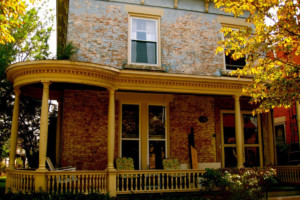
HENRY MERRY HOUSE
330 E Adams St
Henry Merry was a builder who often employed those who had escaped from slavery until they were able to head to Canada. Fugitives from slavery faced life threatening challenges from slave owners, slave catchers, hostile Northerners, and the elements. Learn More
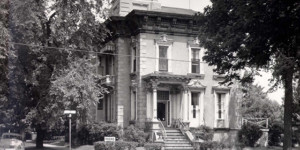
RUSH R SLOANE HOUSE
403 E Adams St
During the 1850’s Rush Sloane was a leading abolitionist in Ohio. In 1852, he defended seven men escaping slavery. The men were released, but one of the former slave owners, sued Sloane in the U.S. District Court in Columbus. Learn More
STOP 4
Continue walking east and turn north on Franklin St. to E. Washington St. Turn right (east) to:
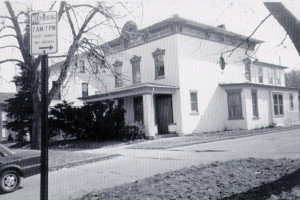
GEORGE BARNEY HOUSE
422 E Washington
George Barney one of the “conductors” on the Underground Railroad in the Sandusky area, and was Sandusky’s best known abolitionist. Learn More
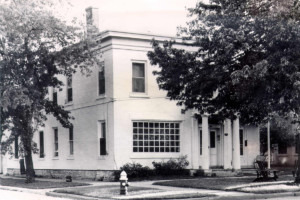
CAPTAIN THOMAS MCGEE HOUSE
536 E Washington
Sandusky was as important as the ports of Toledo, Ashtabula, and Cleveland for Underground Railroad travel. Captain Thomas McGee, who lived in the house, was a master of several sloops and schooners on Lake Erie. Learn More
STOP 5
Cross E. Washington and head west on south side of East Washington St. to Hancock St. Turn right (south) to Facer Park
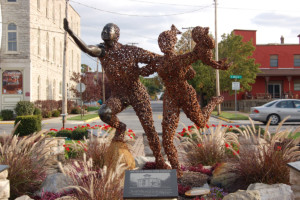 FACER PARK
FACER PARK
SOUTH SIDE OF HANCOCK & WATER STS.
In 2005, a group of young civic leaders in Sandusky initiated an effort to recognize the city’s role in the Underground Railroad. Facer Park, on the city’s waterfront, was chosen as the location for a sculpture and related educational displays. Over 50 local organizations, businesses and individuals were involved with the project. The park was dedicated on October 9, 2007. Created by local artist Susan Schultz, the sculpture is a symbolic representation of fearless people escaping the chains of slavery. Learn More
FACER PARK ITEMS OF INTEREST
SANDUSKY DOCKS – In the 1850’s the increase in railroad service enabled more fugitives to take actual trains to Sandusky where they transferred to steamships.
CONFEDERATE PRISON – From 1862 to 1865, the United States operated a prison for Confederate officers on Johnson’s Island in Sandusky Bay, only about two miles from downtown Sandusky. Learn More
JOSIAH HENSON – Josiah Henson was the real inspiration for Uncle tom’s Cabin. He explains in his autobiography how he and his family escaped passing through the area a few miles to the west of Sandusky, and getting on a ship in Sandusky Bay. Learn More
FRANCIS DRAKE PARISH – Parish was originally a bitter enemy of the fugitive slaves. As a result of a court case, Parish became an Abolitionist, saying “Yes … I did prosecute them, but the Lord opened my eyes, and I intended to make up for those acts.” And he did.
STOP 6
Head west on Water St. to: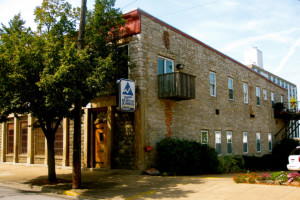
C C KEECH WAREHOUSE
231 E Water St
Christopher Columbus (C C) Keech was among the “earliest and earnest friends” of the Underground Railroad of the Firelands. Keech was a “wholesale and retail dealer in hats, caps, furs, buffalo robes, mittens, buckskin and woolen gloves.” His store was on the south side of Water St east of Columbus Ave. Learn More
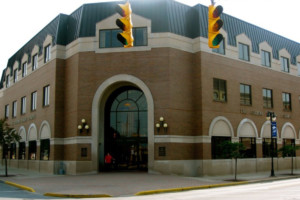
MARSH TAVERN
100 E Water St (now Civista Bank)
Rush Sloane wrote that the earliest story he knew about the Underground Railroad in Sandusky was this one. In the fall of 1820, a man headed for Canada came to Marsh’s Tavern, on the corner of Wayne and Water Sts, which today is the site of Civista Bank. He was hidden by John Dunker, the black hostler and Captain Shepherd, who sailed a small vessel and lived at the Tavern. Learn More
STOP 7 GETTING BACK TO PARKING & FURTHER EXPLORATION
Continue heading west on Water St. to Columbus Avenue. Turn left on Columbus Ave to return to the Erie County Parking Garage.
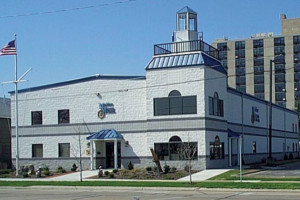
NOT READY TO LEAVE YET?
After taking the Underground Railroad Tour, visitors are encouraged to visit:
THE SANDUSKY MARITIME MUSEUM
125 Meigs St.
This museum contains several displays relating to Sandusky’s Underground Railroad.
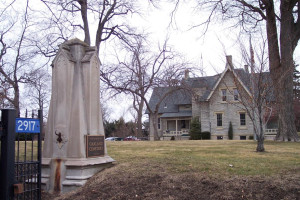
OAKLAND CEMETERY
2917 MILAN RD
This is an old and very historic cemetery. The Sandusky Library has done several specialty tours including an Underground Railroad tour. Oakland Cemetery is located south of downtown on Route 250 (just north of the Sandusky Mall near the intersection of Perkins Ave.). The Cemetery was established in 1850, and held its first burial on May 1, 1850. The City purchased the land from Jane S. Williams, heir to the 500 acres of land previously owned by John Beatty, her brother. Beatty was a pioneer settler of Perkins Township.
REFERENCES used in preparing this tour can be found HERE.
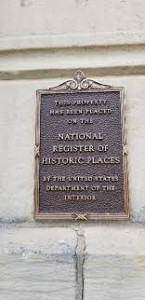
The cemetery originally measured 134 acres in size. The residence and the Chapel were constructed in approximately 1885 and the Chapel was renovated and rededicated in 1975. Oakland Cemetery is often called, “Sandusky Cemetery”.
